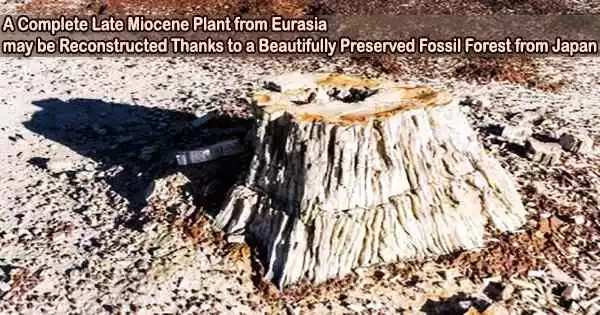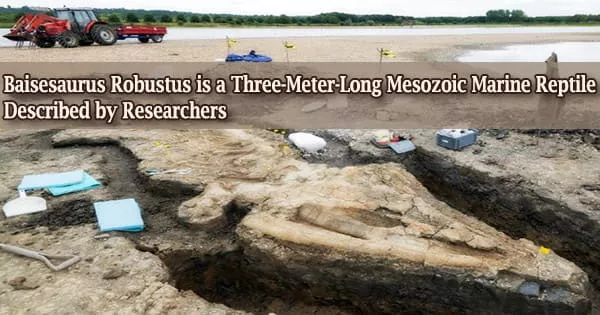A preserved fossil forest, also known as a petrified forest, is a geological phenomenon where ancient trees or forests have been turned into stone through a process called petrification. Petrification occurs when organic material, such as wood, is buried under sediment and undergoes a transformation into minerals over a long period of time.
A research team at Hokkaido University under the direction of Professor Toshihiro Yamada discovered a Wataria parvipora forest fossil that was extremely well preserved. The fossil was almost exclusively accompanied by Byttneriophyllum leaf fossils. Their findings were published in the journal Scientific Reports.
Due to the ease with which wood, leaves, flowers, fruits, seeds, and pollen can separate from plants, whole plant fossils are rarely discovered in a single piece. Because of this, leaves and trunks have unique scientific names.
It’s similar to putting together a jigsaw puzzle to place the various pieces together to reveal the whole plant. To determine a plant’s taxonomic identity, it is crucial to connect the dots and reconstruct it.
In 1994, Kiso River (in Minokamo City, Gifu Prefecture) underwent a historic drought, in the process of which 400 in situ fossilized tree stumps surfaced. While most of the stumps have since been submerged, the team examined 137 stumps, of which 130 were identified as Wataria parvipora.
We found that 98% of the fossil-leaves found at the site belonged to Byttneriophyllum, strongly indicating that they were shed from the parent trees. We could see that the leaves were deposited para-autochthonously on the forest floor they got fossilized where they fell.
Professor Toshihiro Yamada
“Wataria is a wood-fossil, recognized by its distinctive growth rings, abundant parenchyma rays and lack of resin canals. In the 2,000 m2 fossil site, these stumps accounted for 95% of the tree remains, indicating that we discovered a forest predominantly of this species,” says Yamada.
The scientists also discovered that a single sort of leaf was used entirely as a bed to cover the stumps. Byttneriophyllum tiliifolium is a leaf-fossil species belonging to the mallow family (which includes cotton, cacao and durian).
Fossils of this leaf were widely distributed throughout Eurasia during the Miocene and Pliocene epochs and the discovery of the Wataria fossil forest indicates that Byttneriophyllum tiliifolium are the leaves of Wataria.
“We found that 98% of the fossil-leaves found at the site belonged to Byttneriophyllum, strongly indicating that they were shed from the parent trees. We could see that the leaves were deposited para-autochthonously on the forest floor they got fossilized where they fell,” Yamada elaborated.
Byttneriophyllum tiliifolium and Banisteriaecarpum giganteum are linked, according to research conducted by other teams. Future research will focus on searching for Banisteriaecarpum giganteum in Japan, as this discovery would provide strong evidence that all three are part of the same species.
















